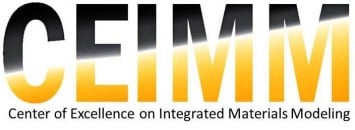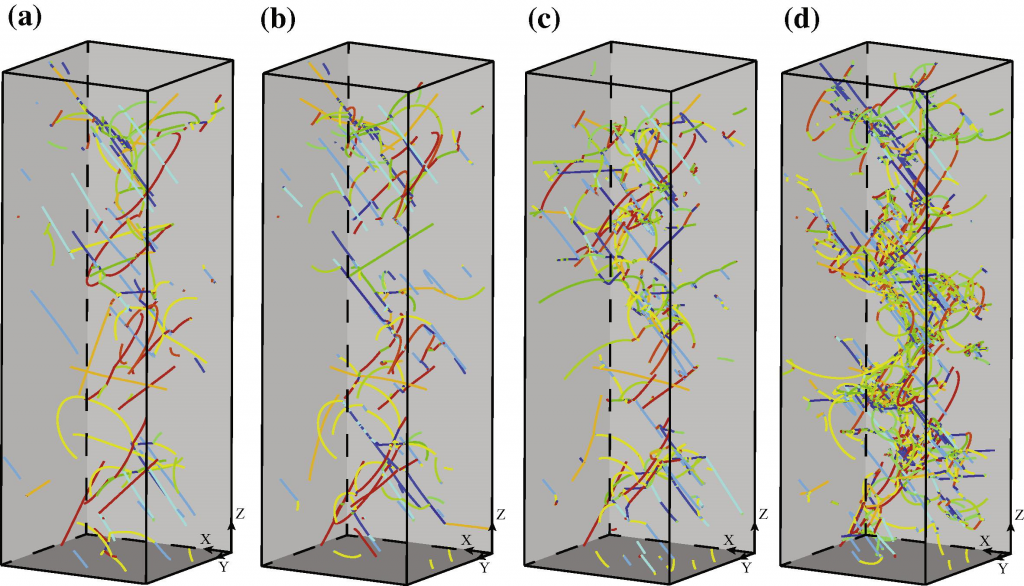Microstructurally based cross-slip mechanisms and their effects on dislocation microstructure evolution in fcc crystals
This article discussed the three new mechanisms of cross-slip in fcc crystals. Below is the abstract from this publication:-
Three newly identified cross-slip mechanisms from atomistic simulations of fcc crystals, namely surface, bulk and intersection cross-slip types, were hierarchically informed into discrete dislocation dynamics simulations. The influence of each cross-slip type on the evolution of the dislocation microstructure in face-centered cubic microcrystals having different crystal sizes and initial dislocation densities was investigated. Dislocation pattern formation, surface slip localization and initial strain hardening were observed, in agreement with experimental observations, and possible explanations are given in the light of these simulations.
Figure 5 is highlighted and this figure depicts the predicted microstructures from simulations at 0.25% strain. Dislocation microstructure at 0.25 % strain for simulations starting with the same initial dislocation network while accounting for (a) only bulk cross-slip, (b) only intersection cross-slip, (c) only surface cross-slip and (d) all cross-slip types. The simulation cell had size D=5.0 μ m and the initial dislocation density was 5×1011 m−2. Dislocations are colored based on the slip system.




